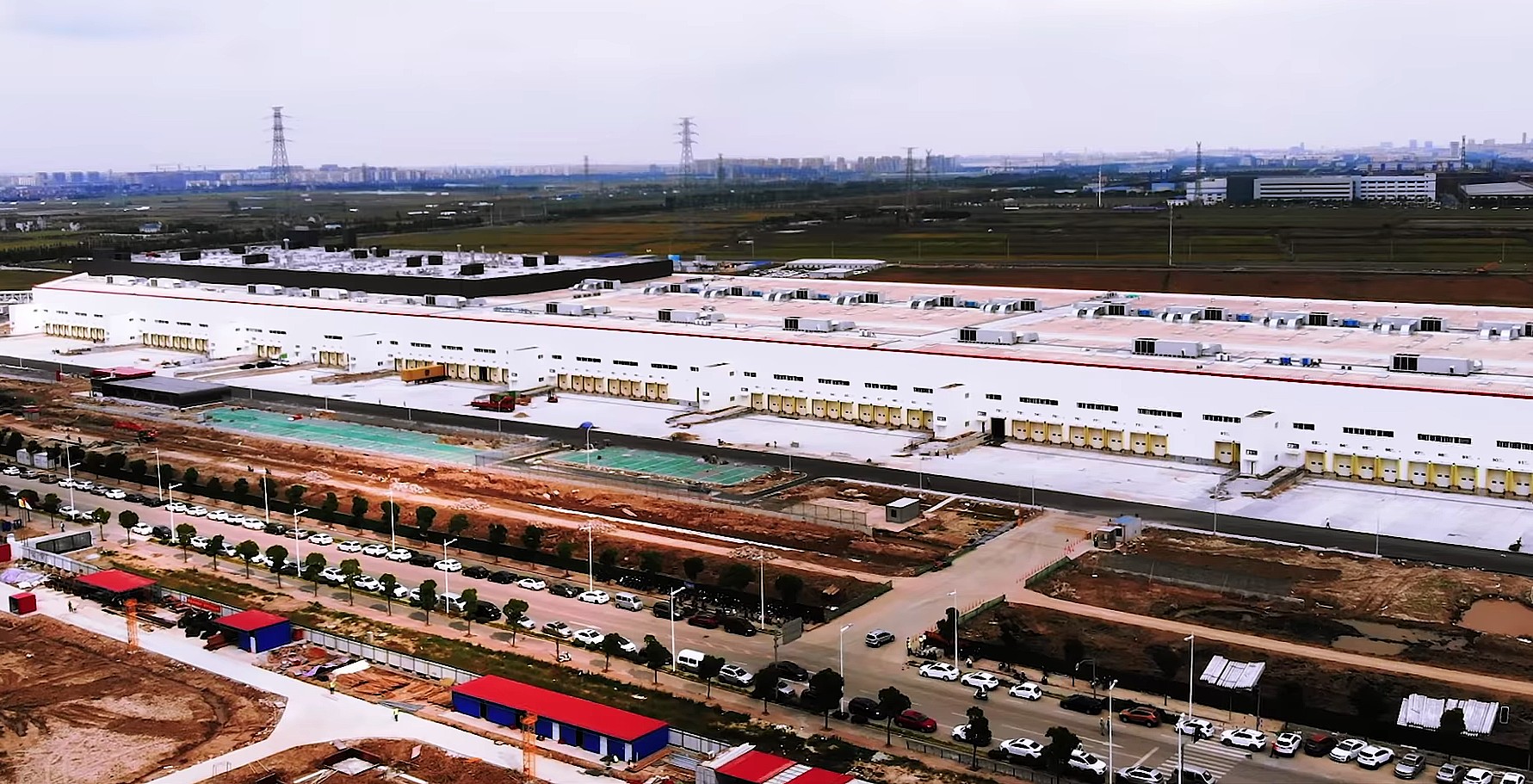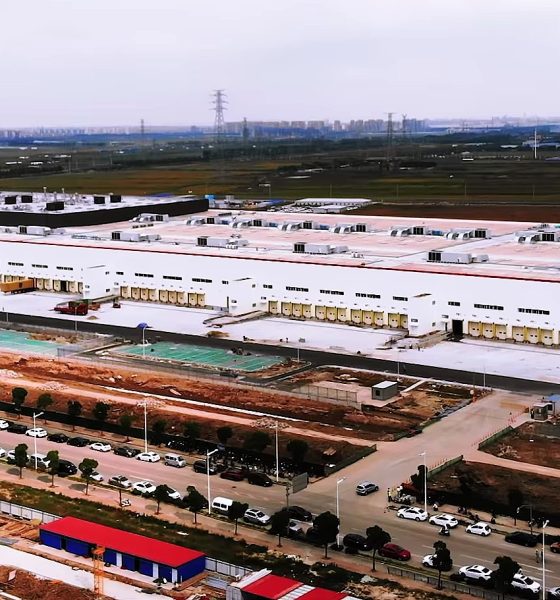It appears that Tesla’s Gigafactory 3 in Shanghai is fully ready to begin the production of the Made-in-China Model 3. The remarkable and welcome update was announced to Chinese media by an executive from the electric car maker and shared on Twitter by news agency The Global Times.
“Tesla Shanghai factory is ready for production and sales will begin after being granted product certification and government approval, said Tesla global vice president Tao Lin,” the media outlet stated in its post.
Based on the recent update from the Times, it appears that Tesla is now only waiting for a product certification for the Model 3. Product certification reportedly involves the manufacturing of an initial batch of Model 3 units that will be sent over and evaluated by authorities. Once the vehicles pass the evaluation process, Tesla could start selling its Made-in-China Model 3 sedans in the country.
This bodes well for Tesla and its efforts in China, considering that authorities granted the electric car maker a production certification recently, which permits the company to start manufacturing the Model 3 in the Shanghai-based site. Considering the quick approval granted for Gigafactory 3’s production certification, there is a good chance that the facility’s product certification will likely be approved quickly as well.
The recent update is quite significant as it was related by an actual executive from the electric car maker. Over the past weeks, numerous reports have emerged speculating that production of the Model 3 in Gigafactory 3 is about to begin, yet these were mostly speculations. With global vice president Tao Lin confirming that Gigafactory 3 only needs a product certificate for the Model 3, Tesla appears to be taking a stand and declaring that it is ready to breach the Chinese EV market with its first locally-produced vehicle.
Recent drone flyovers of the Gigafactory 3 site corroborates the Tesla executive’s recent statement to the Times. Tesla enthusiast and drone operator Jason Yang, for one, has captured two Model 3 units in the Gigafactory 3 area during a flyover last Friday. Leaked images from the facility’s interior show that an initial batch of Model 3 units has been produced as well.
Tesla’s Gigafactory 3 could ultimately be the company’s dark horse this fourth quarter. Even if the Shanghai-based site could only sustain a minimal output of Model 3 in 2019, the vehicles produced on the site and sold to the Chinese market could provide a welcome boost to Tesla’s overall vehicle production and delivery numbers for Q4 2019.
At the beginning of the year, Tesla announced that it was aiming to deliver 360,000-400,000 vehicles for 2019. To meet the lower end of this estimate, Tesla would have to deliver around 105,000 vehicles in the fourth quarter, a number that it is yet to achieve.
That being said, the Fremont factory in the United States was able to deliver 97,000 vehicles on its own in Q3 2019. With more efficiencies to Model 3 production being implemented in the United States and Gigafactory 3 going live, perhaps Tesla can actually meet its ambitious self-imposed estimates.
Watch a recent flyover of the Gigafactory 3 site in the video below.

News
Tesla FSD fleet is nearing 7 billion total miles, including 2.5 billion city miles
As can be seen on Tesla’s official FSD webpage, vehicles equipped with the system have now navigated over 6.99 billion miles.

Tesla’s Full Self-Driving (Supervised) fleet is closing in on almost 7 billion total miles driven, as per data posted by the company on its official FSD webpage.
These figures hint at the massive scale of data fueling Tesla’s rapid FSD improvements, which have been quite notable as of late.
FSD mileage milestones
As can be seen on Tesla’s official FSD webpage, vehicles equipped with the system have now navigated over 6.99 billion miles. Tesla owner and avid FSD tester Whole Mars Catalog also shared a screenshot indicating that from the nearly 7 billion miles traveled by the FSD fleet, more than 2.5 billion miles were driven inside cities.
City miles are particularly valuable for complex urban scenarios like unprotected turns, pedestrian interactions, and traffic lights. This is also the difference-maker for FSD, as only complex solutions, such as Waymo’s self-driving taxis, operate similarly on inner-city streets. And even then, incidents such as the San Francisco blackouts have proven challenging for sensor-rich vehicles like Waymos.
Tesla’s data edge
Tesla has a number of advantages in the autonomous vehicle sector, one of which is the size of its fleet and the number of vehicles training FSD on real-world roads. Tesla’s nearly 7 billion FSD miles then allow the company to roll out updates that make its vehicles behave like they are being driven by experienced drivers, even if they are operating on their own.
So notable are Tesla’s improvements to FSD that NVIDIA Director of Robotics Jim Fan, after experiencing FSD v14, noted that the system is the first AI that passes what he described as a “Physical Turing Test.”
“Despite knowing exactly how robot learning works, I still find it magical watching the steering wheel turn by itself. First it feels surreal, next it becomes routine. Then, like the smartphone, taking it away actively hurts. This is how humanity gets rewired and glued to god-like technologies,” Fan wrote in a post on X.
News
Tesla starts showing how FSD will change lives in Europe
Local officials tested the system on narrow country roads and were impressed by FSD’s smooth, human-like driving, with some calling the service a game-changer for everyday life in areas that are far from urban centers.

Tesla has launched Europe’s first public shuttle service using Full Self-Driving (Supervised) in the rural Eifelkreis Bitburg-Prüm region of Germany, demonstrating how the technology can restore independence and mobility for people who struggle with limited transport options.
Local officials tested the system on narrow country roads and were impressed by FSD’s smooth, human-like driving, with some calling the service a game-changer for everyday life in areas that are far from urban centers.
Officials see real impact on rural residents
Arzfeld Mayor Johannes Kuhl and District Administrator Andreas Kruppert personally tested the Tesla shuttle service. This allowed them to see just how well FSD navigated winding lanes and rural roads confidently. Kruppert said, “Autonomous driving sounds like science fiction to many, but we simply see here that it works totally well in rural regions too.” Kuhl, for his part, also noted that FSD “feels like a very experienced driver.”
The pilot complements the area’s “Citizen Bus” program, which provides on-demand rides for elderly residents who can no longer drive themselves. Tesla Europe shared a video of a demonstration of the service, highlighting how FSD gives people their freedom back, even in places where public transport is not as prevalent.
What the Ministry for Economic Affairs and Transport says
Rhineland-Palatinate’s Minister Daniela Schmitt supported the project, praising the collaboration that made this “first of its kind in Europe” possible. As per the ministry, the rural rollout for the service shows FSD’s potential beyond major cities, and it delivers tangible benefits like grocery runs, doctor visits, and social connections for isolated residents.
“Reliable and flexible mobility is especially vital in rural areas. With the launch of a shuttle service using self-driving vehicles (FSD supervised) by Tesla in the Eifelkreis Bitburg-Prüm, an innovative pilot project is now getting underway that complements local community bus services. It is the first project of its kind in Europe.
“The result is a real gain for rural mobility: greater accessibility, more flexibility and tangible benefits for everyday life. A strong signal for innovation, cooperation and future-oriented mobility beyond urban centers,” the ministry wrote in a LinkedIn post.
News
Tesla China quietly posts Robotaxi-related job listing
Tesla China is currently seeking a Low Voltage Electrical Engineer to work on circuit board design for the company’s autonomous vehicles.

Tesla has posted a new job listing in Shanghai explicitly tied to its Robotaxi program, fueling speculation that the company is preparing to launch its dedicated autonomous ride-hailing service in China.
As noted in the listing, Tesla China is currently seeking a Low Voltage Electrical Engineer to work on circuit board design for the company’s autonomous vehicles.
Robotaxi-specific role
The listing, which was shared on social media platform X by industry watcher @tslaming, suggested that Tesla China is looking to fill the role urgently. The job listing itself specifically mentions that the person hired for the role will be working on the Low Voltage Hardware team, which would design the circuit boards that would serve as the nervous system of the Robotaxi.
Key tasks for the role, as indicated in the job listing, include collaboration with PCB layout, firmware, mechanical, program management, and validation teams, among other responsibilities. The role is based in Shanghai.
China Robotaxi launch
China represents a massive potential market for robotaxis, with its dense urban centers and supportive policies in select cities. Tesla has limited permission to roll out FSD in the country, though despite this, its vehicles have been hailed as among the best in the market when it comes to autonomous features. So far, at least, it appears that China supports Tesla’s FSD and Robotaxi rollout.
This was hinted at in November, when Tesla brought the Cybercab to the 8th China International Import Expo (CIIE) in Shanghai, marking the first time that the autonomous two-seater was brought to the Asia-Pacific region. The vehicle, despite not having a release date in China, received a significant amount of interest among the event’s attendees.










